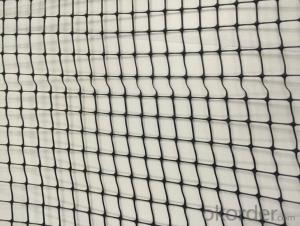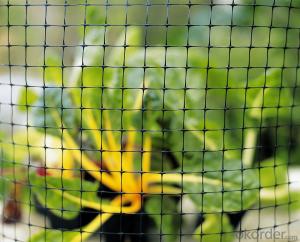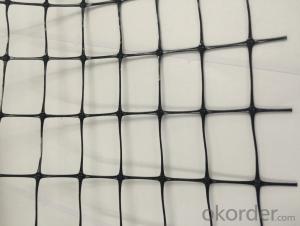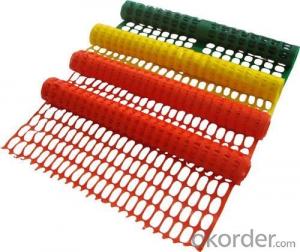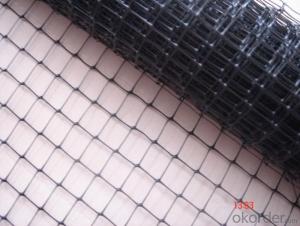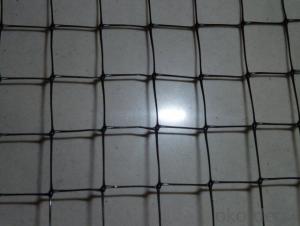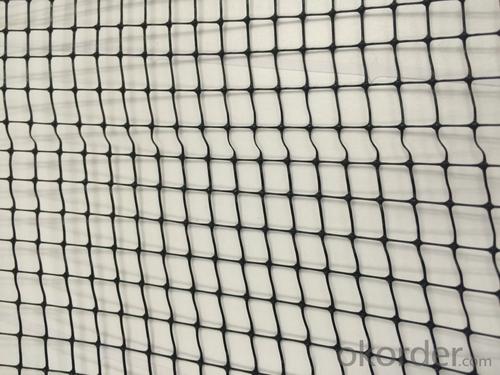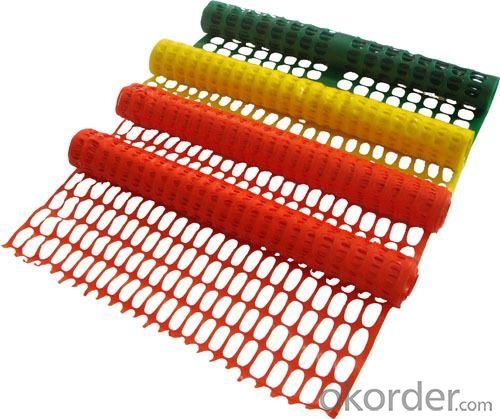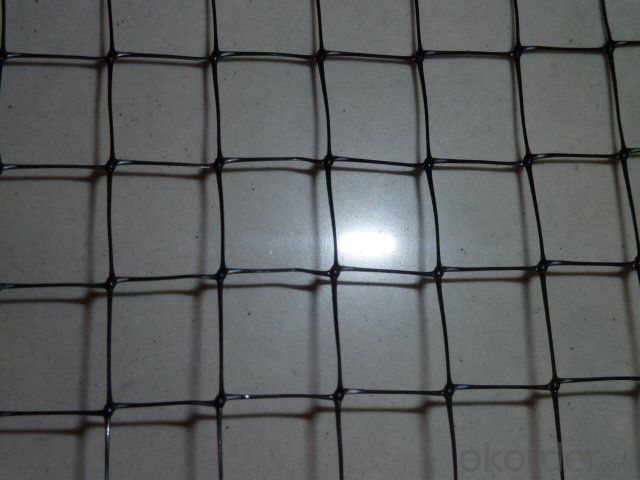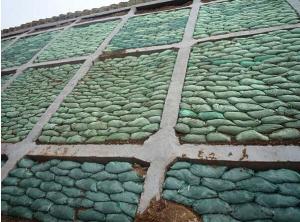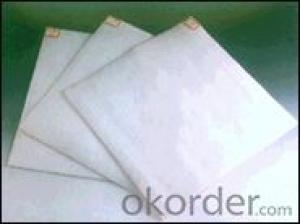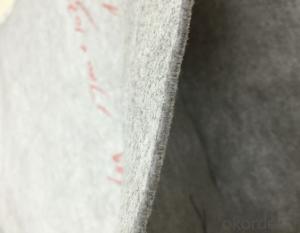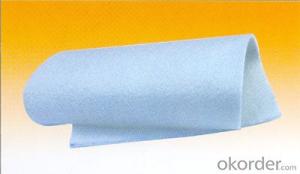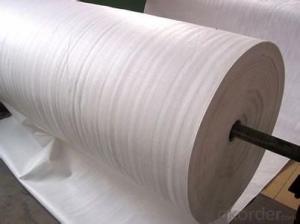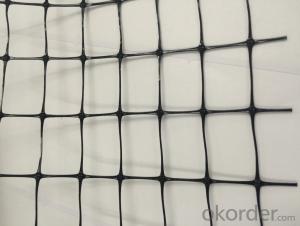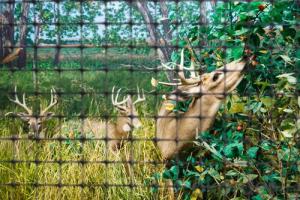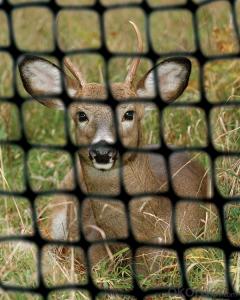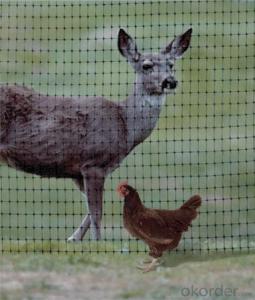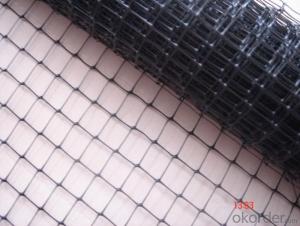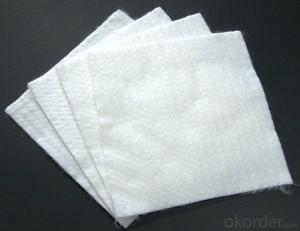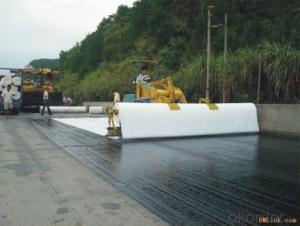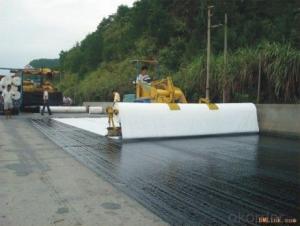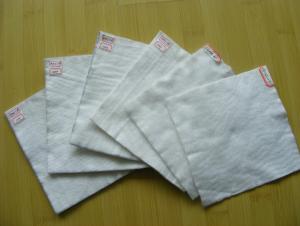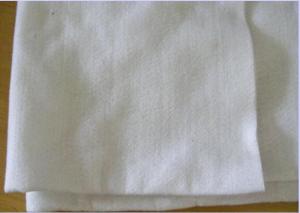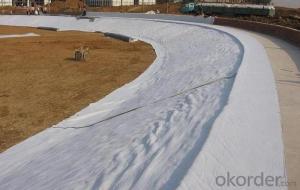PP/PE Deer Fence Netting/Poultry Netting with US 200 Woven Geotextile
- Loading Port:
- China main port
- Payment Terms:
- TT OR LC
- Min Order Qty:
- 5000 m²
- Supply Capability:
- 1000000 m²/month
OKorder Service Pledge
OKorder Financial Service
You Might Also Like
Plastic netting plastic mesh breeding mesh
1. Plastic Plain Netting
Colour:white,black,blue and green, client's requirement.
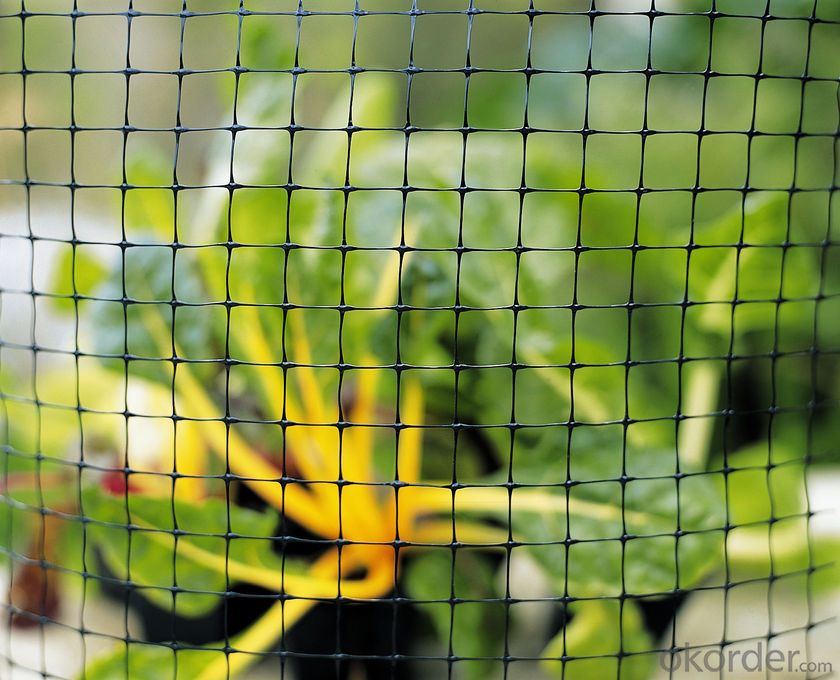
2. Deer fence introduction:
Deer fencing is a very high strength, lightweight, 3.6ft to 7.3ft high deer fence manufactured from high strength polypropylene BOP plastic netting. Deer have a tendency to forage over large areas and the cost effective deer fencing offers a very effective deer control barrier.
The deer fence is black, UV stabilised and rot proof and unobtrusive as it merges into it's background. Deer fencing is very quick and easy to erect and each roll weighs less than 15kg. The Deer Netting should be installed by battening to the fencing posts to ensure the mesh filaments are not damaged.
3. Features of the deer neeting fence:
Deer fence is easy to erect and install
Plastic netting has a mesh hole size of 0.06" ,0.08",0.18",0.19"
The BOP plastic netting has a high tensile strength
Plastic mesh is UV stabilized and chemical resistant
Deer fencing rolls are lightweight
Deer fencing is a very high strength, lightweight 1.8m high Deer fence manufactured from polypropylene.
Deer fencing net is supplied on a 100m long roll
4. Features:
1). Low cost, while has superior strength
2). Has anti-tearing and friction capability
3). Wide range of product availability, some other mesh sizes and weights can also produced as per customers' requirements.
5. Package/Payment/Delivery:
Package: Usually packed by rolls in plastic film bags with labels inside and then loosely loaded in the container
Payment: 30% in advance before manufacturing,and the balance upon the fax of B/L
Delivery: Within 40 to 60 days after receiving the deposit or L/C.
6. FAQ:
Q1: What is your minimum order quantity?
A:The minimum order quantity is 5000 ,but it is negotiable.
Q2:What is your payment terms?
A: T/T,Western Union,Paypal,L/C...
Q3:What is your delivery time?
A:Production time usually costs 2-20 days.
Waiting to cooperate with you!
- Q: What is the seepage geotextile
- Is the kind of ordinary geotextile
- Q: Are geotextiles resistant to rodent penetration?
- Yes, geotextiles are generally resistant to rodent penetration. Their dense and tightly woven structure makes it difficult for rodents to burrow through or chew on the material.
- Q: Can geotextiles be used in subsurface drainage applications?
- Yes, geotextiles can be used in subsurface drainage applications. They are often used as a filter or separator in drainage systems to prevent soil particles from clogging the drainage pipes or channels while allowing water to pass through. Geotextiles can enhance the effectiveness and longevity of subsurface drainage systems by preventing soil compaction and maintaining the flow of water.
- Q: How are geotextiles made?
- Geotextiles are made by weaving or knitting synthetic fibers together to form a permeable fabric with specific properties suitable for various civil engineering applications.
- Q: This is a large sample of gravel anti-filter how this project count
- Visual inspection of the slope of the distance from the clay layer is equal to the thickness of the gravel layer, that is 200mm, so even if it came out scattered Simple function. Also, I used a simple method is to draw in CAD, fill, measure the area, area by length, the volume came out
- Q: How to build a good 12 by 24 brick wall
- First buy enough cement and sand. And then to the cement sand water, stirring. Into cement. Use cement to act as glue to pile up the brick. If it is art wall, it is recommended to use professional cleaning agent hook, and then brush varnish, so red brick and white brick is very artistic and beautiful. You can also use cement to stick directly brush the wall paint, but to brush strong. Sand can not be thick, cement: sand that is 1: 4 plus a small amount of lime. If the brick is an excellent product. The number of piers. Masonry technology is excellent. Construction according to construction specifications. The length of the stubble stubble, the vertical and horizontal successively and rationally.
- Q: How do geotextiles affect soil properties?
- Geotextiles can have a positive impact on soil properties by improving its stability, filtration, and drainage capabilities. These synthetic fabrics act as a barrier, preventing soil erosion and promoting soil compaction. Additionally, geotextiles can enhance the soil's ability to retain water, aiding in irrigation and reducing the risk of drought.
- Q: Which big god has the relevant documents? bow down!
- Geotechnical materials in the application of seepage in the drainage, the specific is to protect the blind ditch.
- Q: How do geotextiles help with moisture management in construction projects?
- Geotextiles aid in moisture management in construction projects by acting as a barrier against water infiltration and promoting drainage. They are permeable fabrics that allow water to flow through, preventing water buildup and potential damage to structures. Geotextiles also help to stabilize soil, control erosion, and separate different soil layers, further enhancing moisture management in construction projects.
- Q: Can geotextiles be used in erosion control in river channel stabilization?
- Yes, geotextiles can be used in erosion control in river channel stabilization. Geotextiles are commonly used as a protective layer to prevent erosion and stabilize riverbanks. They are effective in reducing soil erosion, controlling sediment movement, and promoting vegetation growth, making them an ideal choice for erosion control in river channel stabilization projects.
Send your message to us
PP/PE Deer Fence Netting/Poultry Netting with US 200 Woven Geotextile
- Loading Port:
- China main port
- Payment Terms:
- TT OR LC
- Min Order Qty:
- 5000 m²
- Supply Capability:
- 1000000 m²/month
OKorder Service Pledge
OKorder Financial Service
Similar products
Hot products
Hot Searches
Related keywords
